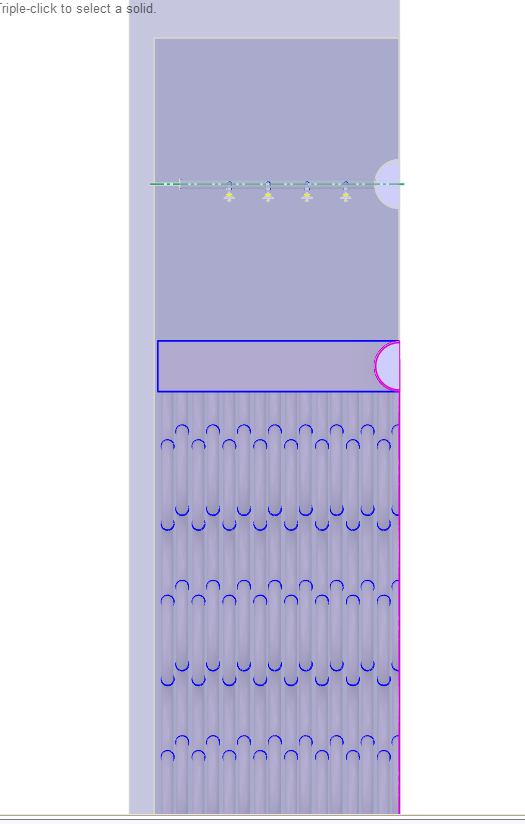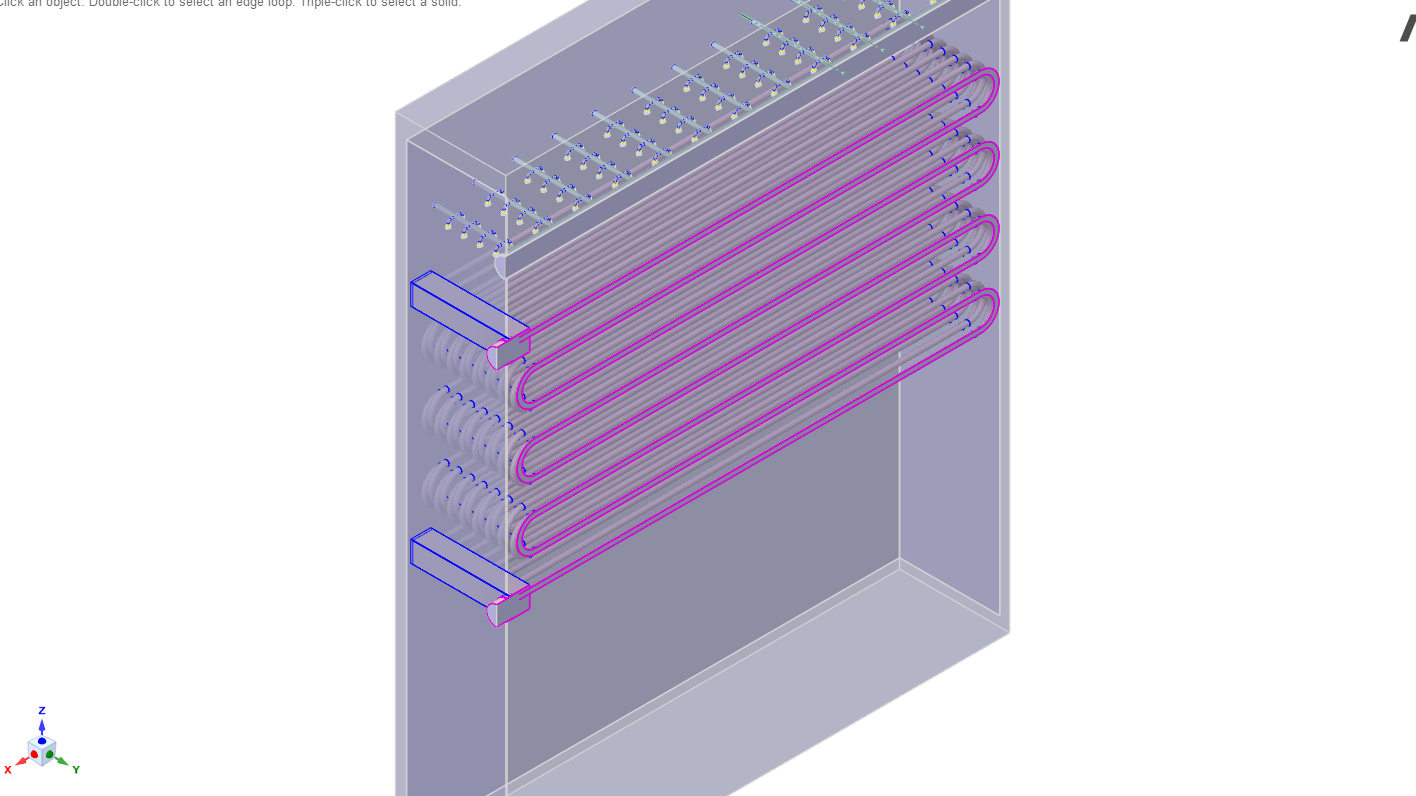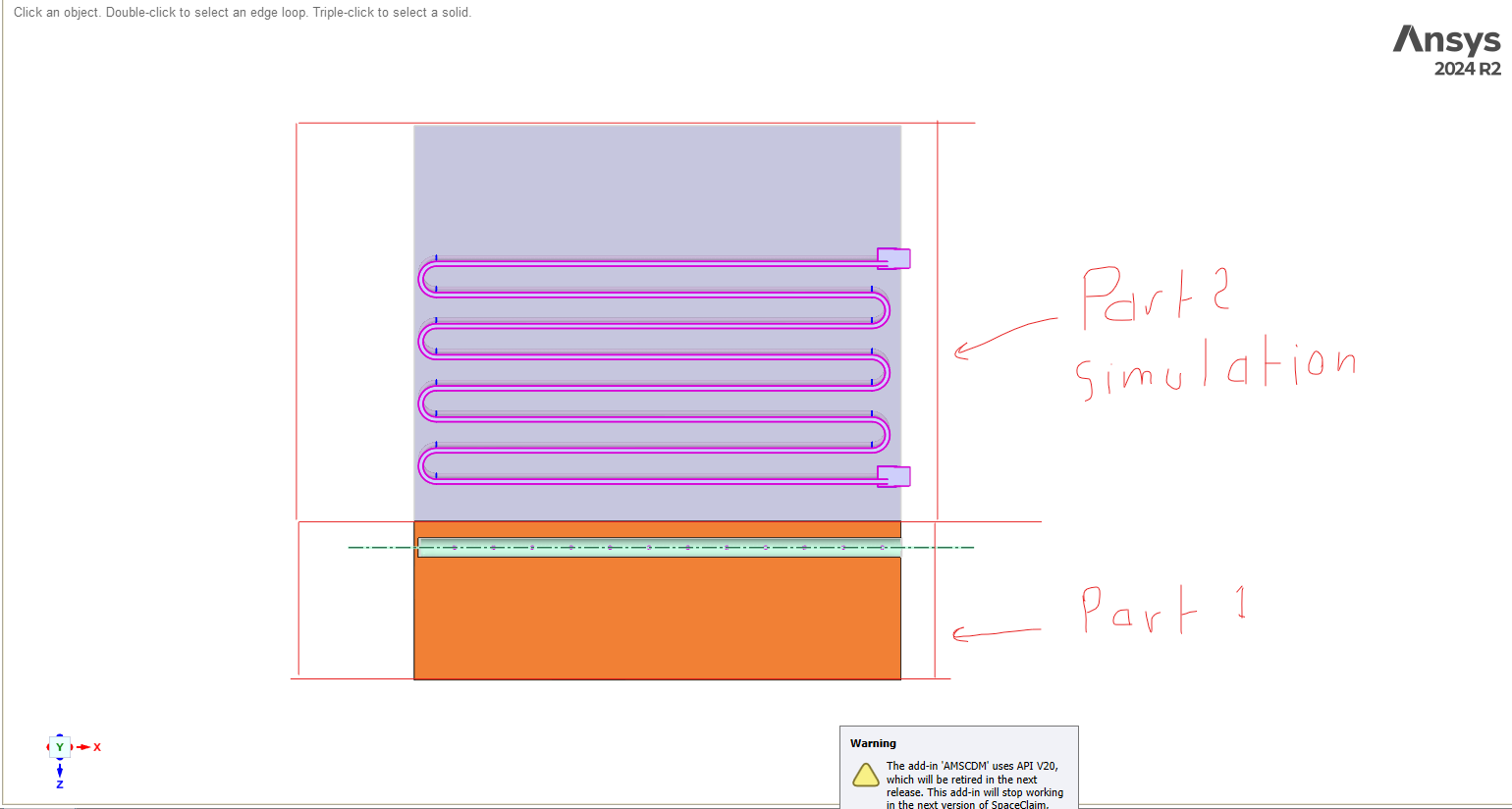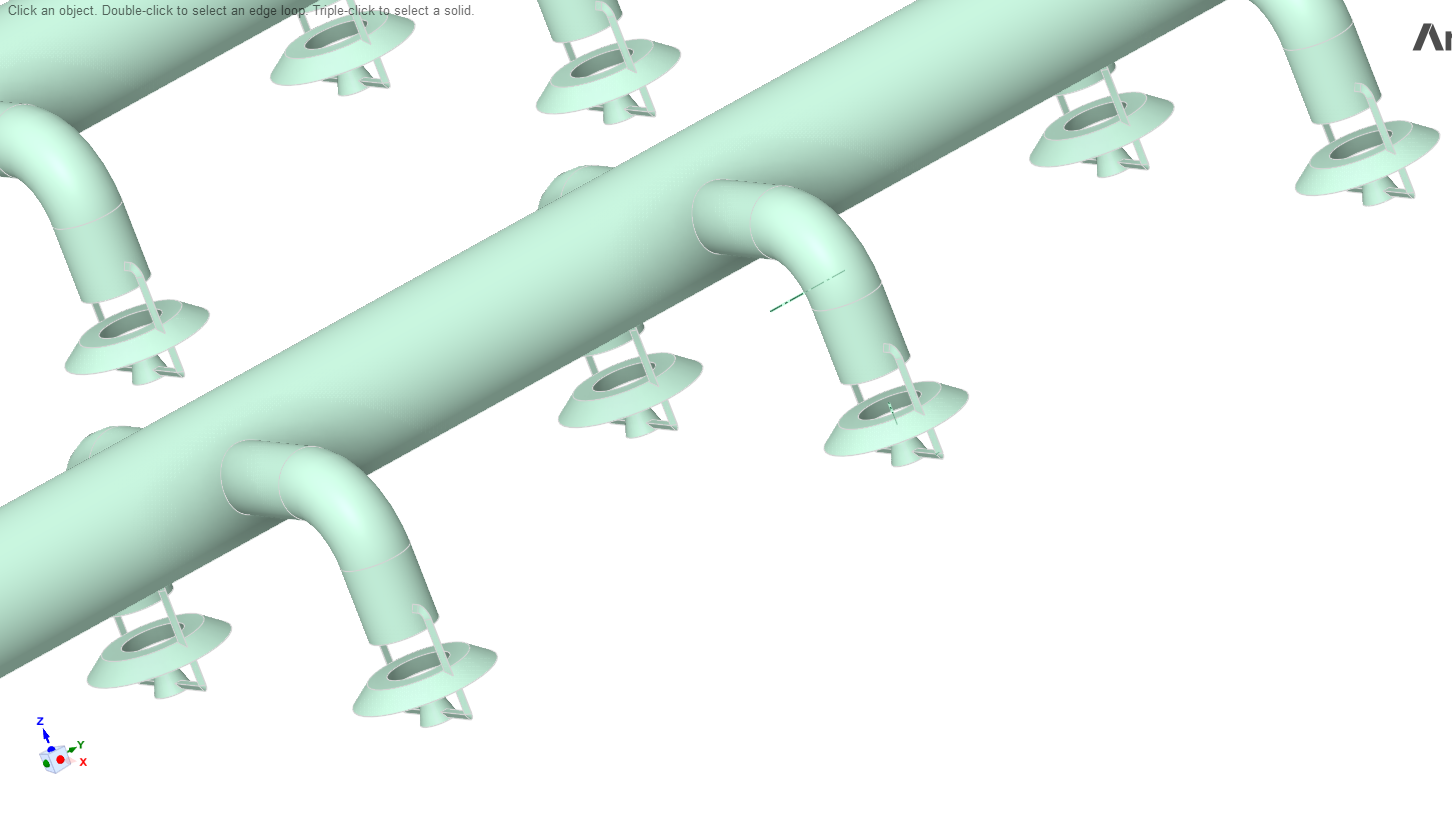-
-
December 31, 2024 at 5:46 pm
naderbluastrike
SubscriberHi, I have an evaporative condenser geom. For those who do not know its principle, in basic terms, it depends on injecting water to cool down the coils of the hot fluid. Consequently, the water evaporates due to humidity, which drops the temperature of the coils.
I have two models now :- the DPM to inject the water (because I do not want to use the complex geometry it makes a lot of elements which will lead to longer simulation times).
- The Eularian-Multiphase model condenses the fluid.
As I knew recently I can not use those two models together in the same simulation process, but I figured out that I could use the DPM injection simulation results as input to the Eulerian simulation setup to have it done. The problem is I do not know how to apply this in terms of geometry like do I need to insert the full mesh of the geometry into the two processes or do I need just to cut the enclosure into two parts one as the water spraying part and the other where the cooling coils are.

-
January 2, 2025 at 1:38 pm
Rob
Forum ModeratorYou may want to have a look at DPM and the Lagrangian Wall Film. That avoids the need for Eulerian as you can evaporate the droplets. That also means you can potentially remove the detail in the last image.
-
January 2, 2025 at 3:23 pm
naderbluastrike
SubscriberHowever, I need to use the Eulerian model to represent the process of having a mixture of phases of ammonia condensation.
-
-
January 2, 2025 at 3:33 pm
Rob
Forum ModeratorOK, to clarify. Water is sprayed in at the top & ammonia gas enters from the bottom? It's a wet scrubber?
-
January 2, 2025 at 3:40 pm
naderbluastrike
SubscriberI apologize if you misunderstood it, It is an evaporative condenser the ammonia enters steel pipes normally and gets cooled by the water sprayers. As you can see the geometry has been split with a plane because I am using a symmetry plane to reduce computational cost.
-
-
January 2, 2025 at 3:55 pm
Rob
Forum ModeratorOK, so DPM on the outside & Euler on the tube side. That should work as the reason for not combing the models is the particles don't see the Euler second phase(s). Convergence isn't going to be trivial as dual domain models (especially with phase change) tend to be very stiff. Gas phase will need to be a species mixture of air(?), water-vapour and ammonia.
-
January 2, 2025 at 5:48 pm
naderbluastrike
SubscriberI have built an approach to solve this problem and I need your advice on it, I have split the geometry into to parts:

Part 1: represents the water spraying process which will be simulated and meshed firstly in a separate workbench task, and its results.
Part 2: represents the condensation part of the Ammonia using the Eulerian model, where the resulting water injection (flow from DPM part 1 simulation) is taken as input.Is it a good approach? Does it solve the problem that I cannot activate the two models in the same simulation process?
-
-
January 3, 2025 at 9:59 am
Rob
Forum ModeratorYou can turn both models on, you just need to apprecite the limitations of using both at once.
It's not a bad idea, but you need to be aware that dual domain models are not simple to converge.
-
January 3, 2025 at 10:57 am
naderbluastrike
SubscriberThank you I appreciate your guidance.
-
-
- You must be logged in to reply to this topic.



-
3467
-
1057
-
1051
-
929
-
896

© 2025 Copyright ANSYS, Inc. All rights reserved.








